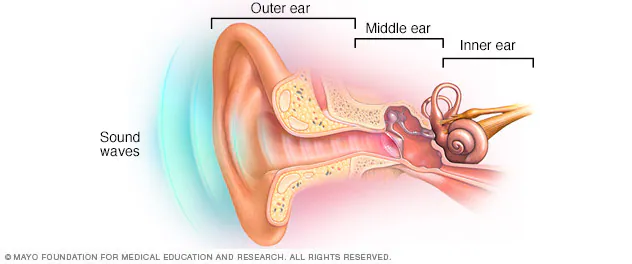
Hearing is a complex process involving the ear’s anatomy, the cochlea, and the brain. This blog will explore the basics of how we hear and the significance of this sensory function in our daily lives.
The Anatomy of Hearing
The ear comprises the outer, middle, and inner ear. Sound waves are captured by the outer ear, travel through the middle ear, and reach the cochlea in the inner ear. The outer ear consists of the pinna and the ear canal. The middle ear is an air-filled cavity that houses the eardrum, ossicular chain, and eustachian tube. The inner ear consits of innerconnected fluid filled chambers for hearing and balance called the cochlea and the semicircular canals. The cochlea’s hair cells convert these vibrations into electrical signals, initiating the process of auditory perception.

The Brain’s Role
The auditory cortex in the brain processes these electrical signals, allowing us to interpret and make sense of different sounds. Our brains are adept at filtering and prioritizing sounds, contributing to our ability to focus on specific auditory stimuli. The brain’s role in hearing is complex.

Sound Perception
Hearing is an active engagement with the environment, enabling us to locate sound sources, understand speech, and appreciate music. Our cognitive processes work in tandem with the auditory system to enrich our daily experiences.
Impact of Hearing Loss
Understanding the mechanics of how we hear is crucial, especially when considering the impact of hearing loss. Innovative technologies, such as hearing aids and cochlear implants, aim to address hearing impairments, highlighting the practical applications of this knowledge. If hearing loss is present, it is important to act promptly. Because sound perception occurs in the brain, it is important to continiue to stimulate the auditory cortex of the brain by utilize hearing aids as soon as hearing loss is noticed.
Conclusion
As we delve into the mechanics of hearing, we gain insights into the sophisticated processes that underlie our ability to perceive and interpret sound. This understanding is pivotal, not only for appreciating the complexities of our auditory system but also for developing solutions to enhance the lives of those affected by hearing impairments.
